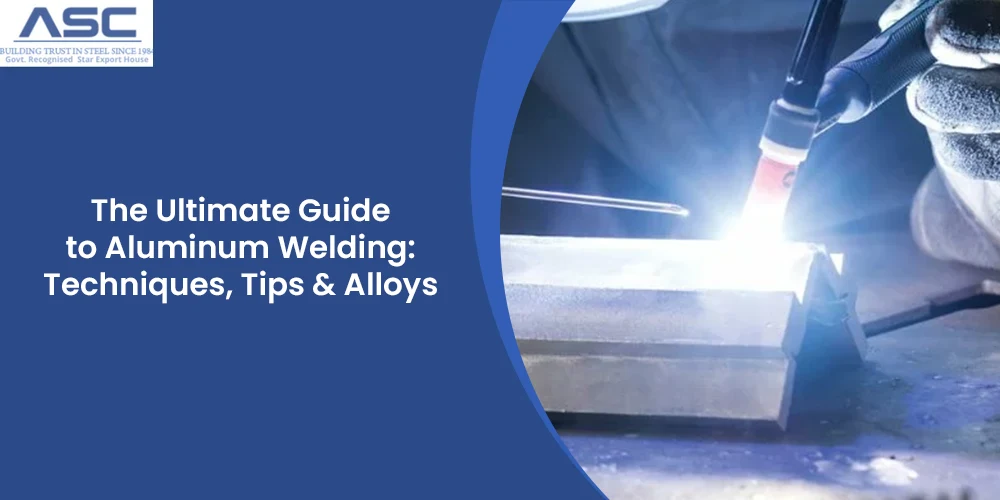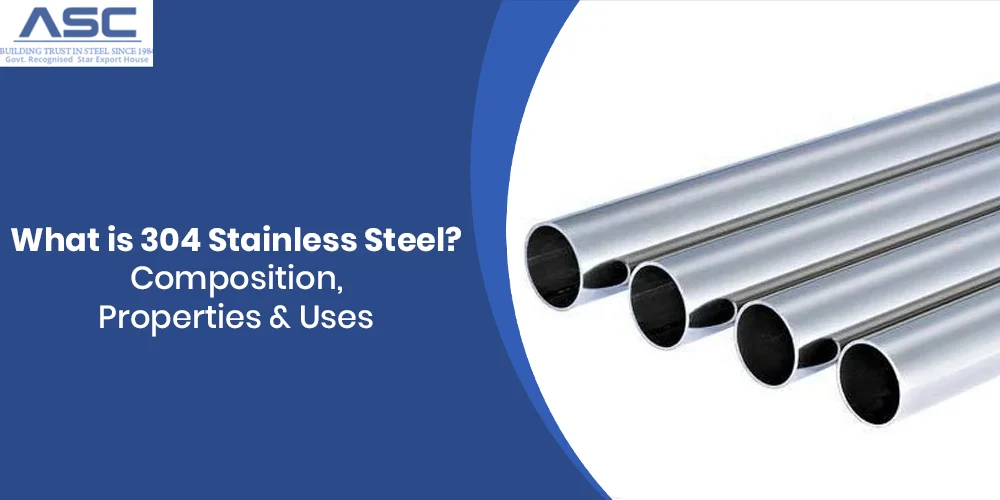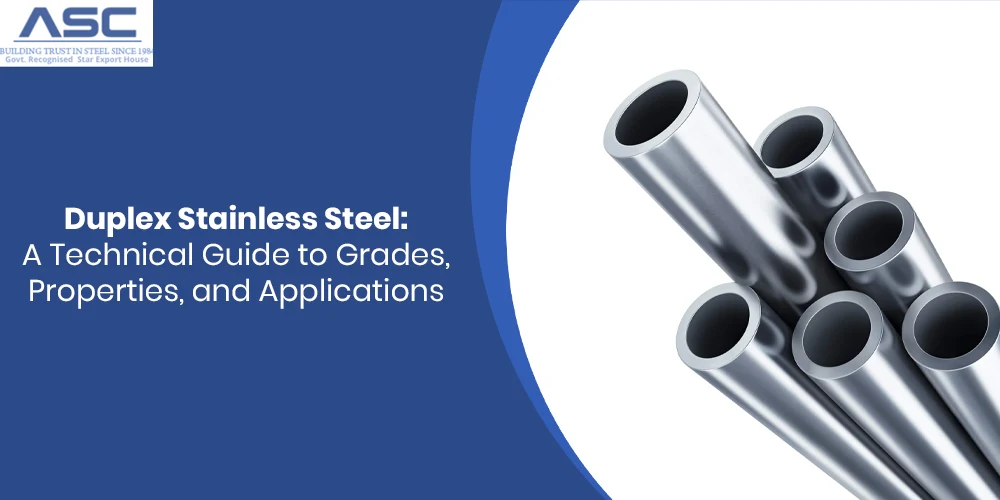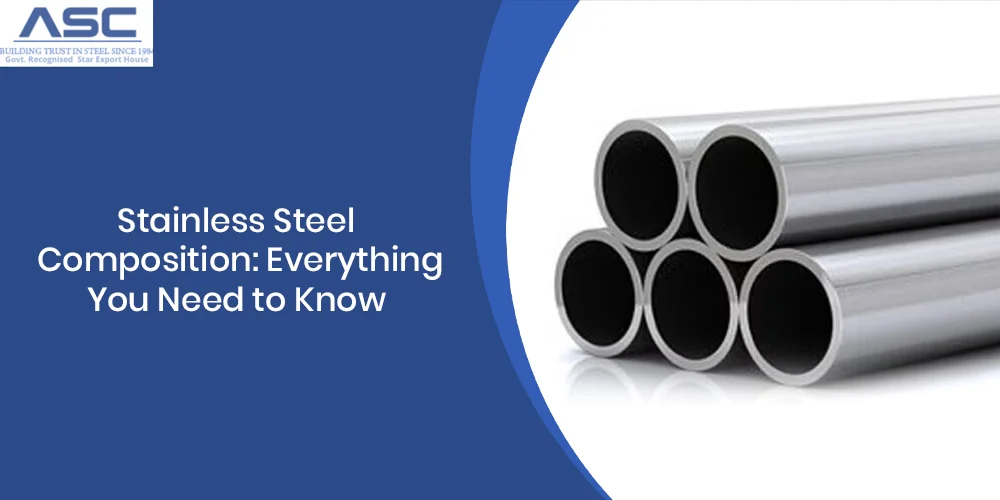The Ultimate Guide to Aluminum Welding: Techniques, Tips & Alloys
by AMC
Posted on May 13, 2025 at 05:01 PM

Aluminum's significance in engineering is clear: lightness, strength, and corrosion resistance make it vital in aerospace, automotive, and marine sectors. But joining it via aluminium welding follows different rules than steel. For quality-focused fabricators and engineers, understanding aluminum's unique welding traits is essential for creating sound, reliable structures.
Amardeep Steel Centre, experienced in supplying diverse aluminium alloys, offers this guide sharing practical insights. We cover foundational knowledge, process choices, techniques, and material awareness crucial for success.
Aluminum Welding: What's Involved?
Simply put, aluminum welding creates a unified metallic structure from separate pieces. Intense local heat (sometimes with pressure) melts the aluminum at the joint, often incorporating compatible filler metal. As the molten zone cools, a permanent metallurgical bond forms. Though fusion is the goal like other welding, aluminum’s unique traits demand specific knowledge, proper equipment setup, and adapted techniques.
Can Aluminum Be Reliably Welded? Addressing the Key Question
Often asked: "can aluminum be welded consistently?” Yes. Welded aluminum is vital. But reliability means managing inherent traits that add complexity compared to steel:
- Persistent Oxide Film: Aluminum instantly forms a tough oxide layer (Al₂O₃) melting far above the metal (~2072°C vs ~660°C). If not removed just before welding or broken by the arc (like AC TIG), it gets trapped, preventing fusion and weakening the aluminum weld. Managing this oxide is crucial.
- Rapid Heat Dissipation: Aluminum conducts heat ~5-6x faster than steel. Heat disperses quickly, requiring higher input settings, making bead control harder, and increasing distortion risk, especially on thin sections. Effective heat management (parameters, speed, design, preheat) is essential.
- Hydrogen & Porosity: Molten aluminum readily dissolves hydrogen from moisture, oils, etc. As it cools, hydrogen solubility drops, forming trapped gas bubbles (porosity). Porosity weakens the weld and reduces fatigue life. Preventing hydrogen contamination via rigorous cleaning, dryness, and good shielding is critical.
- Subtle Melting Cues: Unlike steel's color change, aluminum melts near 660°C without clear visual warning. This lack of cues makes burn-through easier, especially for the inexperienced. Success relies on reading the weld pool's fluidity and behavior, not color.
- Cracking Potential (Certain Alloys): Some aluminium alloys with wide freezing ranges are prone to hot cracking as the weld cools and shrinks under restraint. Alloy chemistry is key. Proper filler selection (to modify weld composition) and controlling heat input/stress are vital preventative measures.
Understanding these behaviors is key. Each challenge has known solutions. Quality welding aluminium comes from applying knowledge and technique to manage these effects.
Understanding the Material: An Overview of Aluminium Alloys
Most engineering uses involve aluminium alloys, not pure aluminum (which is soft). Elements are added to tailor properties: copper adds strength but can hinder welding; magnesium boosts strength/corrosion resistance, often aiding weldability; silicon improves fluidity (for casting/fillers); zinc yields high strength but often difficult welding. Recognizing primary elements gives clues to behavior.
Alloys are grouped into series:
- 1xxx: High purity Al (99%+). Very weldable, ductile, corrosion resistant, low strength.
- 2xxx: Copper alloys. High strength (heat-treatable), often poor weldability (cracking).
- 3xxx: Manganese alloys. Moderate strength (non-heat-treatable), good formability, excellent weldability.
- 4xxx: Silicon alloys. Includes key filler metals (e.g., 4043) for flow/lower MP. Some used as base metal.
- 5xxx: Magnesium alloys. Good strength (non-heat-treatable), excellent toughness/corrosion resistance (marine), generally very good weldability. Important structural group.
- 6xxx: Mg-Si alloys. Medium strength (heat-treatable), good formability/corrosion resistance. Weldable with correct filler (4xxx/5xxx needed). Very common (extrusions).
- 7xxx: Zinc alloys. Highest strengths (heat-treatable). Many common grades (e.g., 7075) considered non-weldable (cracking). Specific weldable alloys exist but need careful control.
Material Choice: Selecting Weldable Aluminium Alloys
Success in aluminium welding requires selecting a suitable base material. Amardeep Steel Centre offers aluminium alloys known for reliable fabrication performance:
- 3003: Good formability/weldability, moderate strength. Common in tanks, ductwork.
- 5052: Popular balance: good strength, excellent corrosion resistance (marine), good formability/weldability. Used in boat hulls, tanks.
- 5083: Higher strength than 5052, excellent weldability/toughness (cryogenic). Used in ships, railcars, truck bodies.
- 6061: Versatile heat-treatable alloy. Good strength/corrosion resistance. Weldable with correct filler (ER4043/ER5356 vital). Common in structures, transport.
- 6063: "Architectural alloy" (extrusions). Good surface finish/corrosion resistance, welds well. Used for window frames, trim.
Always confirm welding recommendations via datasheets or suppliers like Amardeep Steel Centre for guidance.
Process Selection: Common Welding Methods for Aluminum
Choosing the right type of welding process impacts quality, efficiency, and cost. While specialized methods exist, TIG (GTAW) and MIG (GMAW) are dominant for most aluminum weld tasks
Gas Tungsten Arc Welding (GTAW / TIG): For Precision and Quality
TIG (GTAW) is often chosen for top quality, control, or appearance. It uses a non-consumable tungsten electrode, manual filler addition (if needed), and argon shielding to protect the arc and weld pool.
- Advantages: Unparalleled control (heat, puddle, filler), ideal for thin/intricate work. High purity/visual quality, minimal spatter. AC provides oxide cleaning.
- Considerations: Slower process, lower deposition rates. Requires significant operator skill (esp. manual feed).
Gas Metal Arc Welding (GMAW / MIG): For Speed and Efficiency
MIG (GMAW) uses a continuous wire electrode (also filler metal) melting in the arc. Argon or Ar/He shielding protects the metal transfer and weld pool.
- Advantages: Faster speeds, higher deposition rates (good for production/thicker sections). Pulsed MIG offers good control.
- Considerations: Requires specialized feeders (spool gun/push-pull) for soft wire. Parameter setup critical for stable transfer (spray/pulsed spray). Needs good technique (push angle) and prep for quality.
Other, Less Common, Methods
- Other Processes: Resistance welding (auto sheet); Laser/Electron Beam (niche, high precision/cost); Stick welding (generally unsuitable for quality work).
The Cardinal Rule: Impeccable Cleanliness
Success in aluminium welding demands absolute cleanliness more than perhaps any other common metal. Contaminants (oils, dirt, moisture) cause defects.
- Degrease: Remove all oils, grease, etc., with suitable solvents. Ensure the surface is dry.
- Deoxidize: Immediately before welding, remove oxide with a dedicated stainless steel brush to expose fresh metal.
- Protect Filler: Keep wire/rods clean, dry, protected. Handle with clean gloves.
Practical Steps: How to Weld Aluminium
Learning "how to weld aluminium" involves these key steps:
- Safety: Use appropriate PPE; ensure good ventilation/fume extraction.
- Prep: Clean metal thoroughly. Ensure good fit-up (bevel thick sections). Select correct filler for base aluminium alloys.
- Setup: Configure TIG (AC) or MIG (DCEP, special feeder). Set parameters based on thickness/procedure.
- Preheat: Consider for thick sections (>6mm / 1/4") to aid fusion/reduce stress. Monitor temp.
- Weld: Use push angle. Keep the arc short/stable. Travel relatively fast but steady. Use stringer beads. Fill the crater completely.
- Finish: Cool. Clean with a dedicated brush. Inspect visually.
Troubleshooting: Addressing Common Aluminum Weld Issues
Issues occur. Knowing causes helps troubleshoot your aluminum weld
- Porosity: Usually hydrogen. Check cleaning, dryness, gas flow/coverage, arc length.
- Cracking: Wrong filler, excess restraint, poor crater fill? Check filler, manage stress, improve technique.
- Lack of Fusion: Low heat, too fast, oxide, bad technique? Adjust params, slow down, re-clean, check angle.
- Burn-Through: Too much heat/too slow? Reduce params, speed up, consider backing.
- Soot/Oxides: Contaminants, poor shielding? Improve cleaning, check gas, shorten arc.
A quality "aluminum weld" requires internal soundness, not just good appearance.
In Conclusion: The Value of Understanding Aluminum Welding
Aluminium welding is challenging but essential. Understanding aluminium alloys, choosing the right type of welding, prioritizing prep (cleanliness!), and honing technique enable reliable, high-quality joints. This proficiency expands design possibilities.
Amardeep Steel Centre provides quality aluminium alloys and acts as a resource, offering material knowledge and fabrication insights to support your projects.
Contact Amardeep Steel Centre to discuss your aluminum welding needs. We offer expert guidance and competitive quotes.
FAQs: Key Aluminum Welding Questions Answered
Can any aluminum alloy be welded successfully?
Many common aluminium alloys (1xxx, 3xxx, 5xxx, 6xxx) weld well. High-strength ones (some 2xxx, 7xxx) are often difficult/unsuitable due to cracking. Always verify specific alloy weldability.
Why is welding aluminum considered more difficult than steel?
Key factors: managing surface oxide; high thermal conductivity (heat control); hydrogen absorption (porosity risk); subtle melting cues (burn-through risk).
Is Argon the only shielding gas used for aluminum welding?
Pure Argon is standard for TIG/MIG welding aluminium. Argon/Helium mixes add heat for thick MIG sections but cost more.
When is preheating necessary for aluminum?
Often recommended for sections >~6mm (1/4") to aid fusion, reduce stress, minimize defects. Not always needed for thin material.
What's the typical choice between ER4043 and ER5356 filler wire?
Depends on base aluminium alloys. ER4043 (Si) often for 6xxx (good flow, less crack sensitive). ER5356 (Mg) often for 5xxx (higher strength, better anodizing match). Consult charts.
How can porosity in aluminum welds be definitively prevented?
Minimize hydrogen: extreme cleanliness (parts/filler), dryness, high-purity gas/good coverage, correct technique (short arc), protect from drafts.
Where can I reliably source aluminum suitable for welding applications?
Reputable suppliers like Amardeep Steel Centre offer certified, weldable-grade aluminium alloys and technical support.

304 Stainless Steel: Everything You Need to Know – Simple Guide
Ever found yourself wondering what gives your kitchen sink that lasting shine, or what tough material keeps those big industrial pipes from turning into rust buckets?

